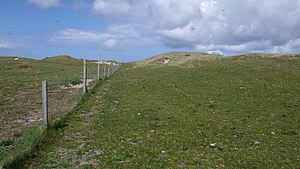Recently I was asked by one of our students about whether to allow an in the money bull call (buying a call vertical) to simple be exercised/assigned, or to resell the long call back to the market and then cover the short stock position.

If you are unfamiliar with the trade, it is simply a trade where you buy a long call, and then sell a short call at a higher value strike price than the long call. Both calls are in the same expiration period. This is a debit trade. The primary exit is typically a % based ROI. Sometimes, however, the stock can gap suddenly and you may find that BOTH options have trended into the money. Further, you may receive a notice of assignment of your short call, and now need to address the short stock position that you have in your portfolio. The question is – should you simply allow the long call to be exercised and cover the short stock position? Or, should you resell the long call to the market and use the proceeds from the sale of the long call along with the proceeds from the short call assignment to buy the stock at market price and cover the short stock position? Read on to find out!
In level four we teach that a bull call can achieve a maximum return when both options are exercised/assigned. We state that the maximum reward is the difference in strikes less the debit paid. That is true IF we are at options expiration and there is no time value (extrinsic value) associated with the option.
When you exercise an option, you forfeit the value of that option. So if there WAS any extrinsic value, you have given it up.
The question was asking for the MOST profitable way to handle this situation. The answer you selected would work and satisfy the brokerage, but it would forfeit any extrinsic value that you could have captured by reselling the option.
So here’s how it would work: your short call is assigned and you sell the stock at the strike price of your short call. The broker deposits that money into your account while also establishing a short equity position. You now have a long call that is ITM with the exact intrinsic value that is equal to the stock price minus the calls strike plus some time value (the extrinsic). If you sell the option, you capture the intrinsic AND the extrinsic. That credit, along with the credit from the sale of the stock will result in a larger return than simply exercising your long call.
Here’s an example using real data….
On August 30, you bought a January 2011 250/260 bull call on AAPL. You would have paid $4.35 for the $10 wide-spread. By definition, the maximum reward (if both options were exercised and assigned) would be 10.00 – 4.35 = $5.65. Nice! greater than a 100% ROI.
So this morning you open your email and there it is – Notice of Assignment! Your heart races, a slight sweat breaks across your brow… Oops, sorry, I digress! So, you have sold 1,000 shares of AAPL (which you don’t even own!) and the broker has placed $260,000 into your account, but there is also a line item on your portfolio which shows a -1,000 shares of AAPL. The broker is giving you four days to cover the short sale of the stock. So, you could exercise your option and buy 1,000 shares of AAPL for 250,000. The math would look like this:
Original debit: 10 @ 435.00 = $4,350
Credit from the sale of the stock: <$260,000>
Exercise and buy @ 250/sh: $250,000
Net of activities: <$5,650> That’s a net credit to your account! Awesome.
Let’s take a look at the options chain for AAPL this morning and see what the value of your strike 250 long call is….
Ok, the Jan 2011 strike 250 lc has a bid value of $37.10. What would the transactions look like if we sold those calls instead of exercising them?
Open trade debit: $4,350
Sell Stock at 260/sh: <$260,000>
Sell 10 contracts Jan 2011 250 LC @ 37.10/sh: <$37,100>
Buy AAPL at market price (276.57/sh): $276,570
Net of transactions: <$16,180> net credit to your account!
By selling the option rather than exercising it, you would capture the extrinsic value still associated with that long call. In this case, that’s $ 276.57 – 250.00 = 26.57 intrinsic value, 37.10 (option bid price) – 26.57 (intrinsic) = $10.53 extrinsic.
So, $10.53 * 1,000 shares = $ A lot! ($10,530 to be exact)
$16,180 (the net of selling the call and covering the stock at the current market price)- 10,530 (the calculated extrinsic value of the strike 250 long call) = you guessed it, the original max reward, $5,650.00
I hope that this example clears up your question about the question on the exam. In the final analysis, we must always “Do the math” and determine which course of action will provide us with the maximum return.
OptionsANIMAL Instructor
Options Trading Resources
options trading school * what is options trading * options trading tips * option course * learn trading strategies * option trading course * online trading education


